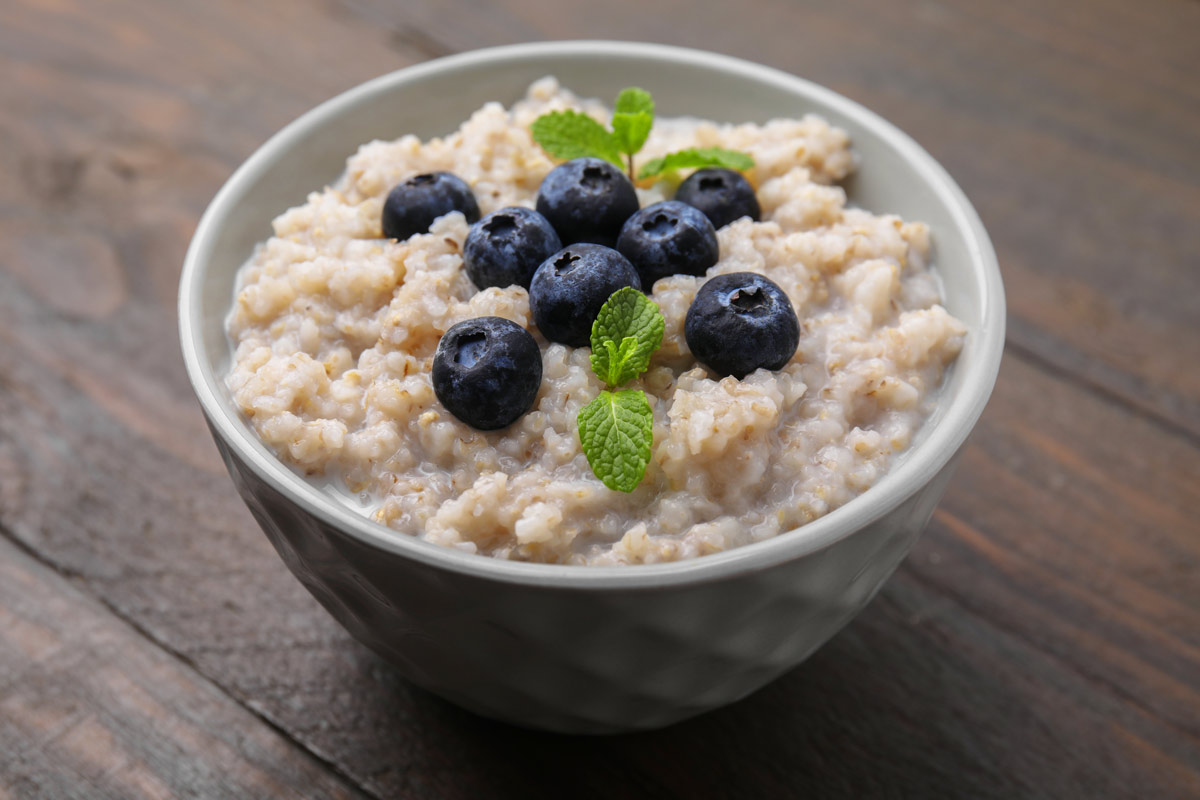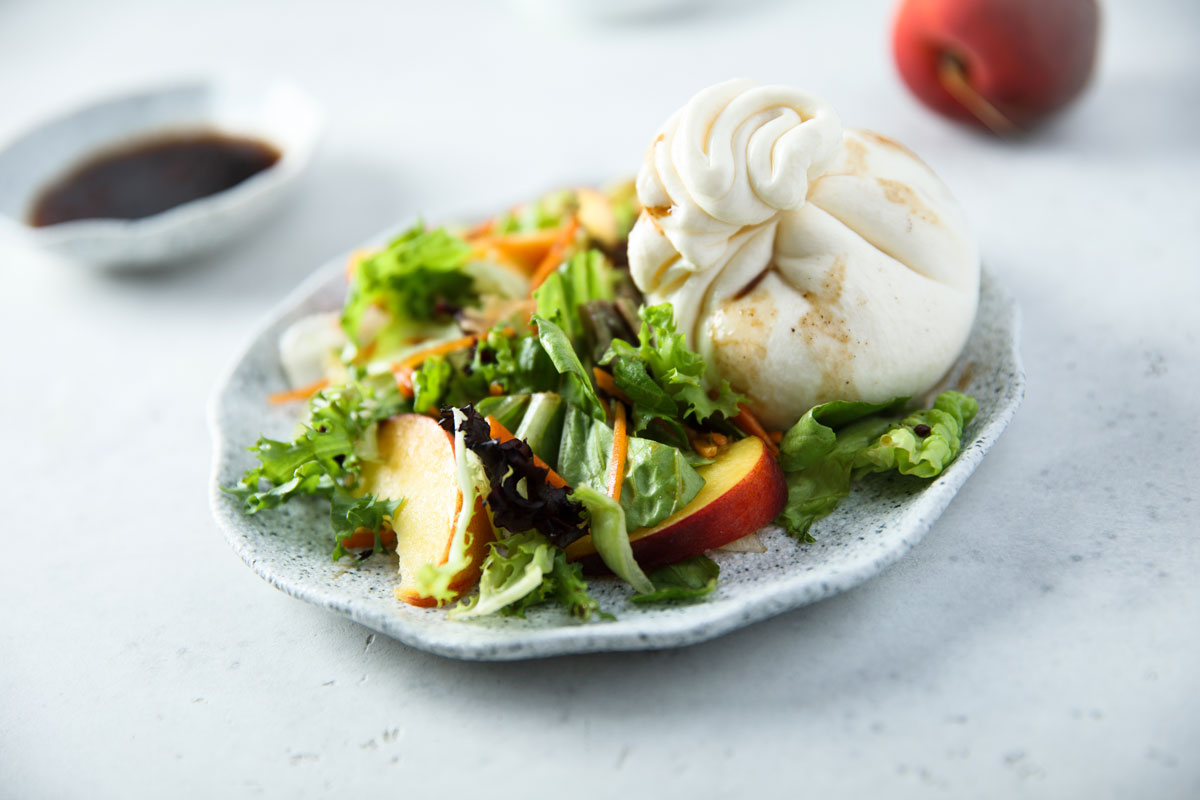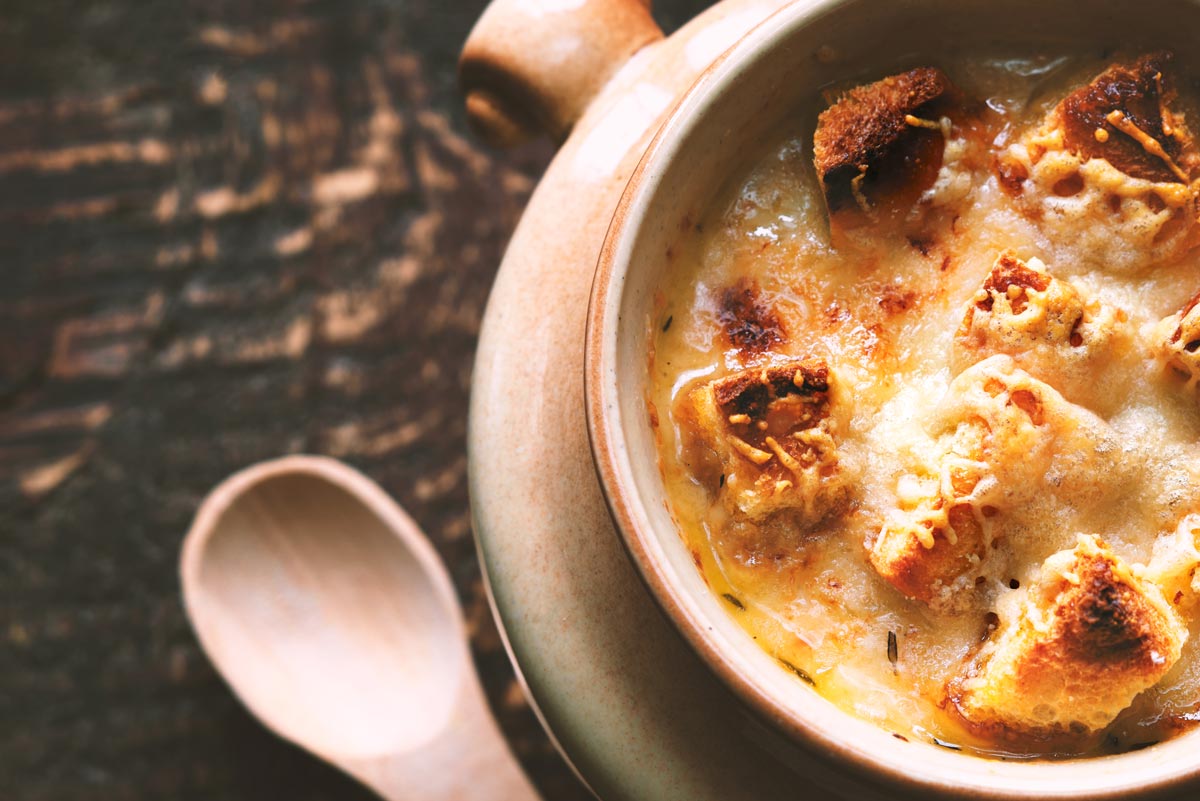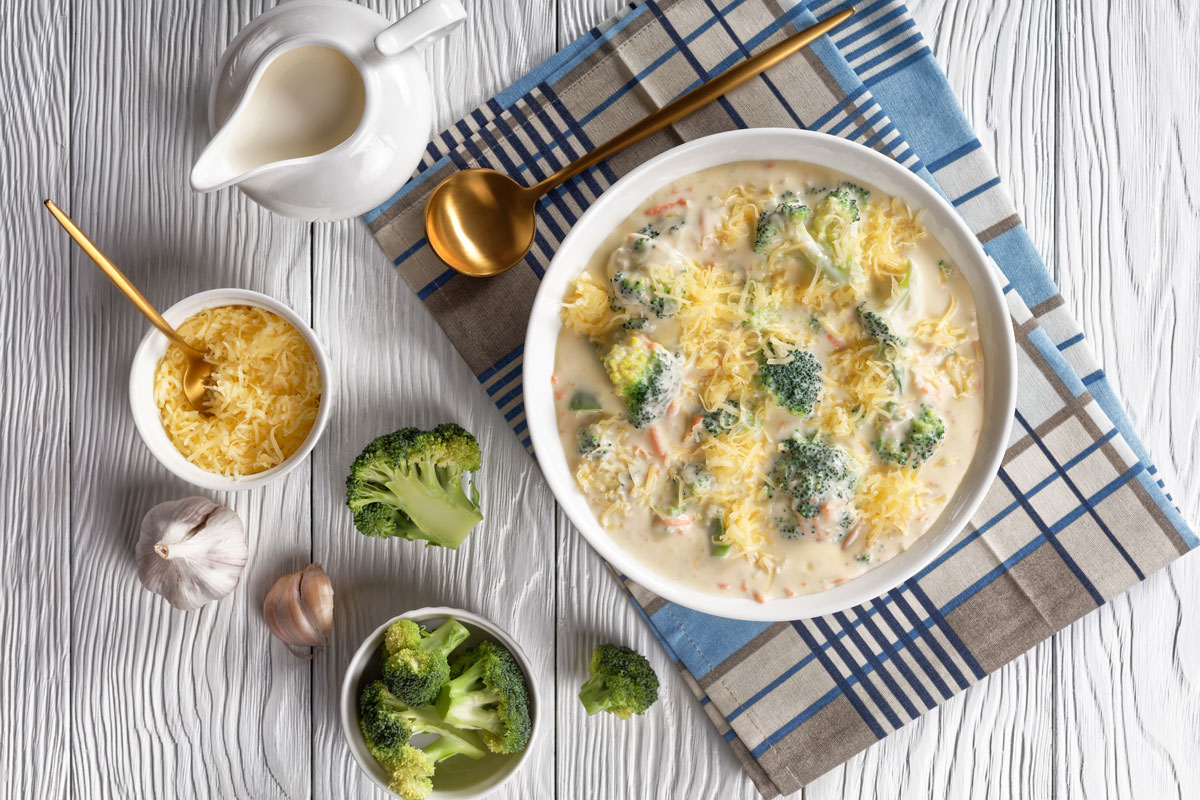Rainbow Slaw Recipe, Spotlight on Barley, Ancient Grains to Combat Diabetes, and Exercise + Greenscape = Bliss
There’s everything to love about a no-cook side dish that’s as tasty as it is visually appealing. My twist on traditional coleslaw brings together three different cruciferous veggies—all known for their high-level nutrients—and an olive-oil based dressing that adds in a healthy dose of polyphenols. It also includes barley, a whole grain with surprising health benefits. Finally, take advantage of the warm, sunny days to move your exercise activities to a greenspace—this change of venue can have physical and emotional benefits.
Rainbow Slaw
 Rainbow Slaw
Rainbow Slaw Move over, mayo! A tangy vinaigrette is a great way to dress a slaw. And what a slaw this is—a colorful feast of fresh veggies enhanced with barley, an ancient grain that’s more versatile than you may think (see “Healthy Ingredient Spotlight” and “For Your Best Health” in this week’s newsletter).
Ingredients
- 3/4 cup uncooked hulled barley
- 3 tablespoons sherry vinegar
- 1 tablespoon Dijon mustard
- 1 tablespoon honey
- 1/4 cup chopped shallots
- 4 tablespoons extra virgin olive oil
- 1 pound head green cabbage, cored
- 1/2 pound head red cabbage, cored
- 1/2 pound Brussels sprouts, trimmed
- 2 yellow or red bell peppers, stems and ribs removed
- 1 red onion, trimmed
- 3 large carrots, scrubbed and peeled, if needed
- 1/4 cup fresh flat-leaf parsley, finely chopped
- 1/4 cup fresh dill, finely chopped
- Coarse sea salt, to taste
- Freshly ground black pepper to taste
Directions
Step 1
Prepare the barley according to package directions and set aside to cool. Make the vinaigrette by whisking together the vinegar, mustard, honey, and shallots. Slowly drizzle in the olive oil, whisking until the vinaigrette has emulsified.
Step 2
Grate all the vegetables by hand or machine and toss thoroughly in a very large glass mixing bowl along with the herbs. Add the vinaigrette and toss well again. Taste and add more vinegar, if desired, along with salt and pepper. Serve at room temperature but refrigerate any leftovers.
Yields 10 servings

Healthy Ingredient Spotlight
Barley

If you only know barley from beef barley soup, you’re missing out on so many other ways to enjoy this whole grain—as a side dish with sautéed onions, as a breakfast cereal with fruit, or as a layered parfait with yogurt, to name just a few. A toothsome swap for white rice (which has almost no fiber and few nutrients because it’s refined), barley delivers on fiber, protein, and many vitamins and minerals. It also helps keep blood glucose steady, promotes a healthy gut biome, and fills you up. Though the cooking time is longer, hulled barley retains far more nutrients than pearl barley, so shop for that. Note: Barley does contain gluten, so it’s not for people with celiac disease or gluten sensitivity.

Quick Kitchen Nugget
Make a Weekly Barley Batch
Take some time one day a week to make enough barley for four or more servings, so that it’s ready when you are. Though package directions vary, you often need 3 or 4 cups of water per cup of uncooked barley. Keep an eye on it as it cooks, since the water may evaporate before the barley is done. It should retain its shape and be chewy, not mushy.

For Your Best Health
Ancient Grains Combat Diabetes
According to the research review “Use of ancient grains for the management of diabetes mellitus: A systematic review and meta-analysis” published in the journal Nutrition, Metabolism and Cardiovascular Diseases, “there has been renewed interest in ancient grain varieties for their possible enhanced health benefits in [diabetes]. Ancient grains represent an important category of ancient cereals that have not undergone human breeding or genetic modification, thus preserving their inherent genetic features. The genetic diversity of these ancient crops not only offers a variety of food options but also represents a valuable genetic heritage to be preserved.”
The report goes on to detail the phytochemicals in ancient grains, including phytosterols, phenolic compounds like ferulic acid and lignans, flavonoids, and carotenoids, all linked to a variety of health benefits thanks to their antioxidant and anti-inflammatory properties. Among the grains in the many studies the researchers reviewed with positive results are oats, brown rice, millet, buckwheat, and barley. Many are rich in beta-glucan, a type of soluble fiber that has been shown to improve insulin sensitivity.
Separate studies done at the University of Arizona found that the beta-glucan in barley surpassed other grains in terms of cholesterol reduction—it helps flush it out of your body.
These and other research reports highlight the value of choosing these grains over refined ones—they take longer to cook but are more than worth the effort when it comes to feeling satisfied (they really fill you up!) and to improving heart health by mitigating two of its biggest risk factors: diabetes and high cholesterol.

Fitness Flash
Exercise + Greenscape = Bliss
We know from past studies that being in nature brings physical and mental health benefits similar to those of physical activity and, of course, we know the benefits of exercise in general. So could exercising in greenspace boost the separate health benefits of each?
To answer this and other questions, Jay Maddock, PhD, Regents Professor with the School of Public Health at Texas A&M University and director of the university-led collaborative Center for Health & Nature, along with Howard Frumkin, MD, DrPH, Hagler Fellow and senior vice president and director of the Land and People Lab, assessed existing evidence regarding physical activity in natural settings and developed strategies for promoting these activities. Their study, published in the American Journal of Lifestyle Medicine, identified several factors that affect how often people visit parks and natural settings, the extent to which they engage in physical activities once there, and the benefits they get from this activity.
Dr. Maddock and Dr. Frumkin found that research suggests exercising in a park or other natural setting is more beneficial than exercising indoors. Because the studies they reviewed focused on short-term outcomes (less than one year), whether these benefits occur over the long term remains to be seen. “Despite this, the research is clear that natural settings could be an effective venue for promoting physical activity,” Dr. Maddock said. “People generally enjoy being outdoors, with parks, trails, and community gardens being the most popular venues.”
What makes the outdoors more enticing? Physical features, like community centers, playgrounds, lighting, and clear signage; natural features, such as a tree canopy and scenic bodies of water; and factors like classes, festivals, a welcoming environment, and a perception of safety, as well as visitors’ strong feeling of connectedness to nature and belief that spending time in these spaces, all contribute.
“Parks and trails are particularly important due to their accessibility and widespread availability, but access varies significantly by geography, and rural areas often have less access to natural spaces because they have more privately held land,” Dr. Maddock said. “For example, nearly 98 percent of Illinois residents live within half a mile of a park, compared to only 29 percent in Mississippi.”

Dr. Maddock and Dr. Frumkin also found that use of parks and greenspaces for physical activity varies across demographic groups, with men more likely than women to use these spaces for physical activity. In addition, a study of parks in Los Angeles found that Black adults are less likely than white adults to engage in physical activity in parks, while English-speaking Latinos are equally likely and Asian/Pacific Islanders are more likely.
“Some groups—Black, Indigenous, and other people of color, and immigrant and refugee populations, for example—often have experienced historic or current discrimination that hinders their use of natural spaces, and they routinely have less access to high-quality parks,” Dr. Frumkin said. “In addition, children, the elderly, and people with disabilities face challenges in accessing natural spaces. Ensuring that these spaces are safe and easy to navigate, with appropriate programming, could help increase their use of parks and other natural settings.”
With these complexities in mind, the researchers offered four options that health care professionals could implement to encourage the use of parks and other natural settings by their patients.
One is simply to “prescribe” nature contact to patients. “Recommending that patients spend more time in these settings is known as nature prescriptions, or ‘ParkRx,’ and while more research is needed, the studies to date suggest that this approach is effective,” Dr. Maddock said.
Another is for health professionals to model this behavior by engaging in it themselves—this is effective in promoting healthy behaviors while also enhancing the well-being of the health professionals.
A third approach is for health professionals to engage in community efforts that promote the use of outdoor spaces, such as Houston’s Be Well Communities initiative, which is supported by the M.D. Anderson Cancer Center.
Finally, health professionals could help create and maintain parks and greenspaces by steering funds into these efforts through Community Health Needs Assessments, Medicaid funds, and funds from health care conversion foundations.
“It is clear that the use of parks and natural settings for physical activities could be a potentially powerful tool for promoting two important health behaviors simultaneously,” Dr. Maddock said. “This could be especially important given that the majority of Americans do not get enough exercise or spend enough time outdoors.”
Get More Recipes In Your Inbox!



